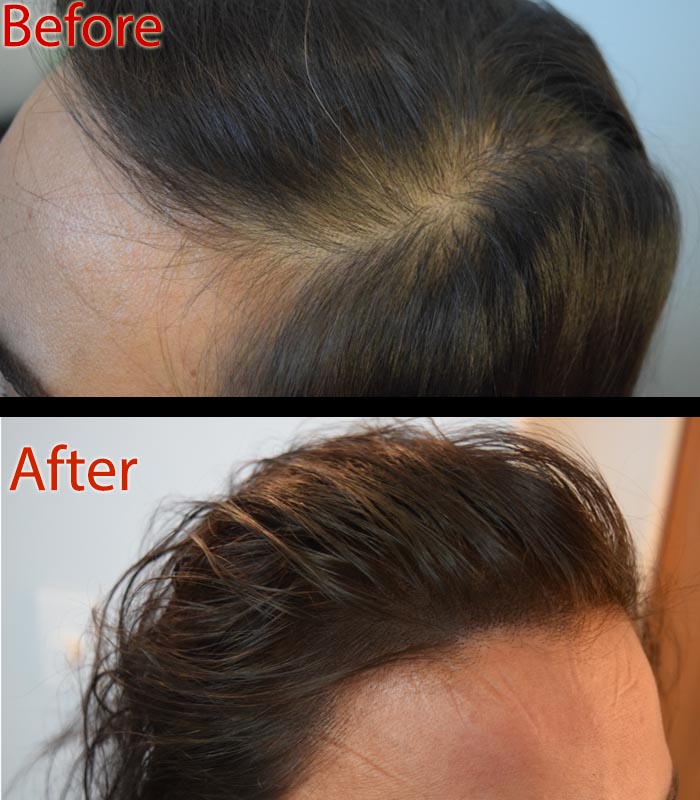Is pumpkin seed oil for male pattern baldness effective? Well, pumpkin seed oil has emerged as a subject of scientific interest in the treatment of male pattern baldness, technically known as androgenetic alopecia. This common form of hair loss affects approximately 50% of men by age 50 and occurs due to a complex interaction between genetics and hormones, particularly dihydrotestosterone (DHT).
The progressive miniaturization of hair follicles leads to shorter growth cycles, finer hair, and eventually baldness. The hair loss follows predictable patterns along the hairline, crown, and vertex regions of the scalp.
The Scientific Composition of Pumpkin Seed Oil for Male Pattern Baldness
The scientific rationale behind pumpkin seed oil’s potential effectiveness centers on its natural composition of phytosterols, especially beta-sitosterol.
These plant compounds structurally resemble cholesterol and may competitively inhibit 5-alpha reductase, the enzyme responsible for converting testosterone into DHT. When DHT production decreases, the miniaturization process that gradually shrinks hair follicles may slow down, potentially preserving existing hair and encouraging regrowth in the anagen phase.
Pumpkin seed extract contains additional compounds that may contribute to its hair-supportive properties. It provides a rich source of zinc, a mineral essential for hair tissue growth and repair. Its omega-3 and omega-6 fatty acids help maintain scalp health by regulating inflammation and supporting cellular membrane integrity. The oil also contains various antioxidants that combat oxidative stress, which has been implicated in premature follicular aging and dysfunction.
Limitations and Considerations for Treatment Success
However, several important limitations must be considered when evaluating pumpkin seed oil for male pattern baldness intervention. First, the current body of research remains relatively small, with limited large-scale, long-term studies. The 2014 study, while well-designed, used an oral supplement containing additional ingredients beyond pumpkin seed oil, making it difficult to isolate the specific contribution of pumpkin seed oil alone.
The biological response to pumpkin seed oil likely varies significantly based on individual factors, including genetics, hormone profiles, age, and the progression of hair loss before treatment initiation. Those with advanced androgenetic alopecia may experience minimal benefit, as pumpkin seed oil cannot revive completely miniaturized follicles that have become dormant.
Bioavailability presents another consideration. When applied topically, questions remain about pumpkin seed oil’s ability to penetrate the scalp sufficiently to affect follicles at their root level. Oral supplementation may provide more systemic effects but requires consistent daily use for months before potential benefits might be observed.
Scalp Micropigmentation: An Alternative Worth Trying?
For individuals seeking definitive solutions for hair loss, particularly those with advanced androgenetic alopecia, pumpkin seed oil for male pattern baldness may not be effective.
Scalp micropigmentation offers advantages rooted in its fundamentally different approach. Rather than attempting to biochemically influence hair growth processes, SMP uses specialized pigmentation techniques to create the visual appearance of follicles on the scalp.
The procedure involves depositing medical-grade pigment into the upper dermis of the scalp using fine needles, creating thousands of tiny impressions that mimic the natural appearance of closely cropped hair. This creates an immediate visual density that cosmetically addresses the appearance of thinning hair and receding hairlines without requiring ongoing maintenance.
From a scientific perspective, SMP eliminates the biological variability inherent in treatments dependent on individual hormone responses and genetic factors. The results are predictable and consistent across different patients, with outcomes visible immediately after treatment completion rather than requiring months of consistent application.
Additionally, SMP requires minimal maintenance, typically needing touch-up sessions every 4-6 years, in contrast to daily application of topical treatments or oral supplements. This makes it particularly suitable for individuals who have not responded to conventional treatments or who have progressed to more advanced stages of hair loss where regrowth treatments show diminishing returns.
A study published in the International Journal of Trichology (2015) by Rassman et al. titled “Scalp Micropigmentation: A Useful Treatment for Hair Loss” documented patient satisfaction and outcomes.
While SMP does not biologically restore hair, its cosmetic results provide an alternative for those seeking reliable solutions in place of pumpkin seed oil for male pattern baldness. It could be a better alternative for men with Norwood scale classifications of 4 or higher.
Looking for expert SMP practitioners in Arizona? Get help at DermiMatch Clinic.

